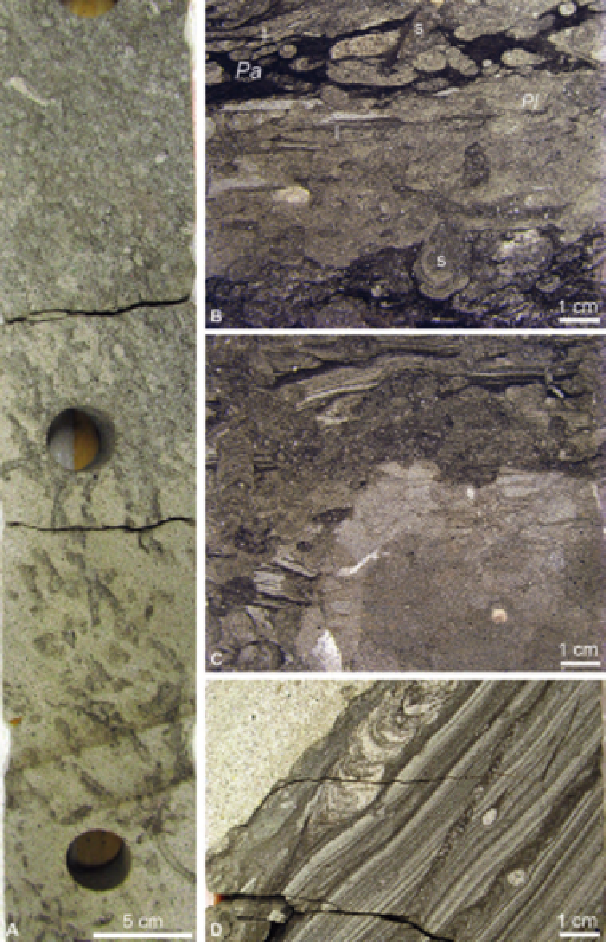Environmental Engineering Reference
In-Depth Information
FIGURE 6
Ichnofabrics in slabbed cores from wells in the Vøring Basin, offshore Norway (Block
6706/12 and 6707/10), containing deep-marine fan deposits of the Santonian Kvitnos Formation
(B, C) and the Campanian Nise Formation (A, D). (A) Top of a sandy turbidite unit with complete
(upper part) to moderate (lower part) bioturbation, consisting of monoichnospecific, irregularly
branched, walled, and meniscate burrows indicative of cf.
Ophiomorpha
(or
Keckia
) (45
deviated
well). (B) Highly bioturbated (mottled) heterolithic sandstone with relict microbial mats (laminated
chips, l), discrete spreiten burrows (s, some of which preserve the cast of their producer as a bright
spot, p),
Palaeophycus
(
Pa
), and
Planolites
(
Pl
). (C) Highly bioturbated sandstone with fragmented
microbial mats (laminated chips), fractured carbonate concretion (lower right), and calcitic bioclasts
(bright spots). (D) Thinly bedded sandstone to siltstone with low bioturbation consisting of
Taenidium
(thick backfilled burrow) and
Zoophycos
(thin spreiten) (45
deviated well).

Search WWH ::

Custom Search